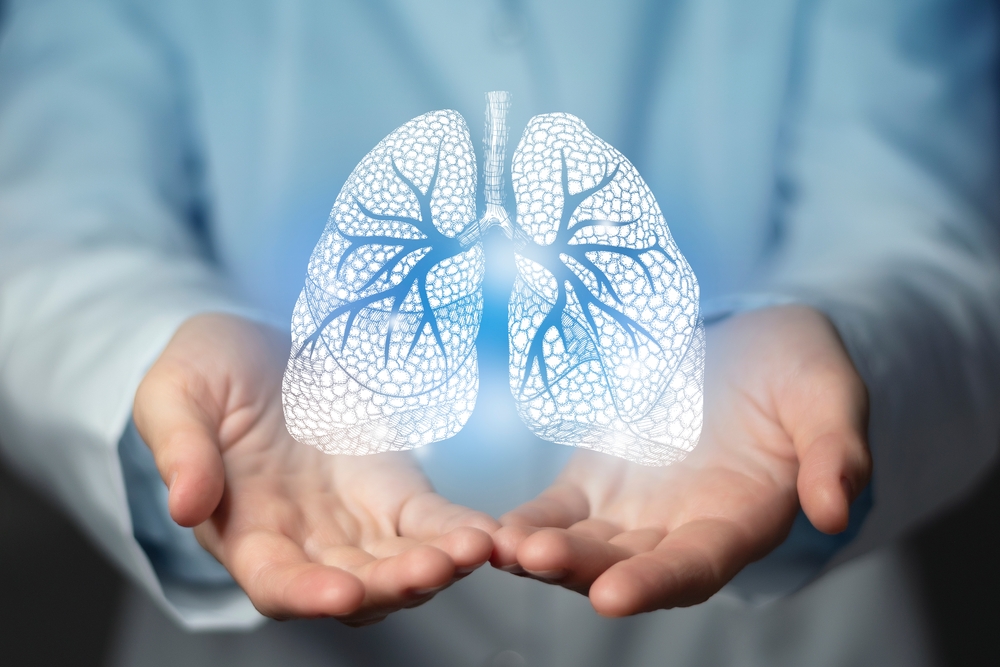When it comes to lung healing and recovery, many well-intentioned approaches actually hinder rather than help the natural healing process. The lungs possess remarkable regenerative capabilities, but common misconceptions about lung health often lead people down ineffective or potentially harmful paths. Understanding the science behind proper lung healing can make the difference between genuine recovery and prolonged respiratory struggles.
The respiratory system operates through complex mechanisms that require specific conditions to heal and function optimally. Many popular lung healing methods ignore these fundamental principles, leading to disappointing results or even setbacks in recovery. The key lies in working with the body’s natural healing processes rather than against them.
Effective lung healing requires a comprehensive understanding of respiratory physiology and the factors that support or hinder recovery. Unfortunately, much of the information available about lung healing is based on outdated concepts or oversimplified approaches that fail to address the underlying mechanisms of respiratory health.
Understanding lung healing fundamentals
The lungs continuously regenerate and repair themselves when given the proper conditions. This process involves multiple cell types, including epithelial cells that line the airways, alveolar cells responsible for gas exchange, and various immune cells that protect against infections and remove debris.
Proper lung healing depends on adequate oxygen delivery, appropriate humidity levels, and the removal of irritants and toxins. The respiratory system also requires specific nutrients and compounds to support cellular repair and regeneration processes.
Many common approaches to lung healing fail because they focus on single interventions rather than addressing the comprehensive needs of the respiratory system. This fragmented approach often produces limited results and may even interfere with natural healing mechanisms.
8 common lung healing mistakes sabotaging recovery
1. Relying solely on breathing exercises without addressing underlying issues
Many people believe that breathing exercises alone can heal damaged lungs, but this oversimplified approach often falls short of producing meaningful results. While breathing exercises can be beneficial for lung function, they cannot address structural damage, inflammation, or toxic buildup that may be preventing proper healing.
Breathing exercises work best when combined with other supportive measures that address the root causes of lung dysfunction. Simply performing breathing techniques without removing irritants, supporting cellular repair, or addressing nutritional deficiencies may provide temporary relief but fails to promote genuine healing.
The most effective approach combines targeted breathing exercises with comprehensive lung support strategies that address inflammation, cellular repair, and environmental factors affecting respiratory health.
2. Using harsh detox methods that damage delicate lung tissue
Aggressive detoxification approaches often do more harm than good for lung healing. Methods involving extreme dietary restrictions, harsh supplements, or invasive procedures can stress the respiratory system and interfere with natural healing processes.
The lungs have sophisticated built-in detoxification mechanisms that work continuously to remove toxins and debris. Harsh detox methods can overwhelm these systems and may even damage the delicate tissues they’re meant to help heal.
Gentle, supportive approaches that enhance the body’s natural detoxification processes prove more effective than aggressive interventions that can create additional stress on already compromised lung tissue.
3. Ignoring the critical role of proper hydration
Adequate hydration plays a crucial role in lung healing that many people overlook. The respiratory system requires proper moisture levels to function optimally, and dehydration can significantly impair the lung’s ability to clear mucus and debris.
Many individuals focus on external treatments while neglecting this fundamental requirement for respiratory health. Proper hydration helps maintain the thin layer of mucus that protects the airways and facilitates the removal of irritants and pathogens.
The quality of water consumed also matters, as contaminated or chemically treated water can introduce additional toxins that burden the respiratory system and impede healing processes.
4. Overlooking environmental factors that continuously damage lungs
Focusing on healing treatments while continuing exposure to lung irritants creates a counterproductive cycle that prevents meaningful recovery. Many people invest significant effort in lung healing protocols while ignoring the environmental factors that originally caused or continue to worsen their respiratory problems.
Common environmental irritants include poor indoor air quality, chemical cleaning products, synthetic fragrances, and various airborne pollutants. These exposures can undo the benefits of healing efforts and may even cause additional damage to recovering lung tissue.
Successful lung healing requires identifying and eliminating or minimizing exposure to environmental toxins while simultaneously supporting the body’s natural repair processes.
5. Misunderstanding the role of inflammation in lung healing
Many approaches to lung healing involve attempts to completely eliminate inflammation, but this strategy can actually interfere with proper healing. Inflammation serves important functions in the healing process, including removing damaged tissue and signaling for repair mechanisms.
The goal should be managing inflammation appropriately rather than eliminating it entirely. Chronic, excessive inflammation certainly impedes healing, but some level of inflammatory response is necessary for proper tissue repair and regeneration.
Effective lung healing strategies focus on reducing harmful inflammation while supporting the beneficial inflammatory processes that facilitate healing and recovery.
6. Neglecting nutritional support for lung tissue repair
Lung healing requires specific nutrients that support cellular repair and regeneration, yet many people focus on treatments while neglecting nutritional foundations. The respiratory system depends on various vitamins, minerals, and compounds to maintain and repair lung tissue.
Antioxidants play particularly important roles in protecting lung tissue from oxidative damage and supporting healing processes. However, the source and form of these nutrients matter significantly, as synthetic supplements may not provide the same benefits as naturally occurring compounds.
A comprehensive approach to lung healing includes ensuring adequate intake of nutrients that specifically support respiratory health and cellular repair mechanisms.
7. Expecting immediate results from long-term healing processes
Lung healing is a gradual process that occurs over weeks, months, or even years, depending on the extent of damage and individual factors. Many people abandon effective healing approaches because they expect rapid results that simply aren’t realistic for genuine tissue repair.
This impatience often leads to cycling through multiple ineffective treatments or abandoning beneficial approaches before they have time to produce results. Understanding the timeline of lung healing helps maintain consistency with effective strategies.
Genuine lung healing involves cellular regeneration, tissue repair, and the restoration of normal function, all of which require time and consistent support to achieve meaningful results.
8. Focusing on symptoms rather than underlying causes
Many lung healing approaches target symptoms like coughing, wheezing, or shortness of breath without addressing the underlying factors that caused these problems. While symptom relief is important, focusing solely on symptoms often provides temporary improvement without genuine healing.
Effective lung healing requires identifying and addressing the root causes of respiratory dysfunction, whether they involve environmental exposures, nutritional deficiencies, infections, or other factors that impair lung function.
This comprehensive approach may take longer to show results but produces more lasting improvements in lung health and function.
Evidence-based approaches to lung healing
Proper lung healing begins with creating an environment that supports the body’s natural repair mechanisms. This involves ensuring clean air, adequate humidity, proper hydration, and the removal of respiratory irritants from the immediate environment.
Nutritional support plays a crucial role in lung healing, with certain nutrients proving particularly beneficial for respiratory health. These include antioxidants that protect against oxidative damage, anti-inflammatory compounds that help manage harmful inflammation, and nutrients that support cellular repair processes.
Gentle, consistent breathing exercises can support lung function when combined with other healing approaches. These exercises should focus on improving lung capacity, promoting proper gas exchange, and supporting the natural clearance of mucus and debris.
Supporting natural detoxification processes
The lungs possess sophisticated mechanisms for removing toxins and debris, and supporting these natural processes proves more effective than trying to force detoxification through aggressive methods. This support involves providing the nutrients and conditions necessary for optimal function of these built-in systems.
Proper sleep plays a crucial role in lung healing, as many repair processes occur during rest periods. Ensuring adequate, quality sleep provides the body with the time and energy needed for cellular repair and regeneration.
Stress management also supports lung healing, as chronic stress can interfere with immune function and healing processes. Techniques that promote relaxation and reduce stress can enhance the body’s natural healing capabilities.
The importance of patience and consistency
Successful lung healing requires patience and consistency with beneficial approaches rather than constantly changing strategies in search of quick fixes. The lungs heal gradually, and meaningful improvements often become apparent only after weeks or months of consistent support.
Tracking progress through objective measures rather than relying solely on subjective symptoms helps maintain motivation and allows for adjustments to healing approaches as needed. This might include monitoring breathing capacity, exercise tolerance, or other measurable indicators of lung function.
Creating a comprehensive healing plan
Effective lung healing involves multiple complementary approaches that address different aspects of respiratory health. This comprehensive strategy typically includes environmental modifications, nutritional support, appropriate physical activities, and stress management techniques.
The specific combination of approaches should be tailored to individual needs and circumstances, taking into account factors like current health status, environmental exposures, and personal preferences that affect long-term adherence to healing protocols.
Long-term lung health maintenance
Once healing progress is achieved, maintaining lung health requires ongoing attention to the factors that support respiratory function. This includes continued attention to environmental quality, nutritional support, and lifestyle factors that promote long-term lung health.
Regular assessment of lung function and health status helps identify any changes that may require adjustments to maintenance strategies. This proactive approach helps preserve the benefits of healing efforts and prevents regression to previous states of dysfunction.
Moving forward with proper lung healing
Understanding these common mistakes empowers individuals to make more informed decisions about lung healing approaches. By avoiding ineffective or harmful methods and focusing on evidence-based strategies that support natural healing processes, genuine improvements in lung health become achievable.
The key to successful lung healing lies in patience, consistency, and a comprehensive approach that addresses the multiple factors affecting respiratory health. With proper understanding and application of these principles, the lungs’ remarkable capacity for healing and regeneration can be fully realized.
Remember that individual responses to healing approaches may vary, and what works for one person may not be optimal for another. The goal is finding the combination of strategies that best supports each individual’s unique healing process while avoiding the common mistakes that sabotage recovery efforts.
Important Medical Disclaimer: This article is for educational purposes only and should not replace professional medical advice. Anyone with lung conditions or breathing difficulties should consult with qualified healthcare providers for proper diagnosis and treatment.

















